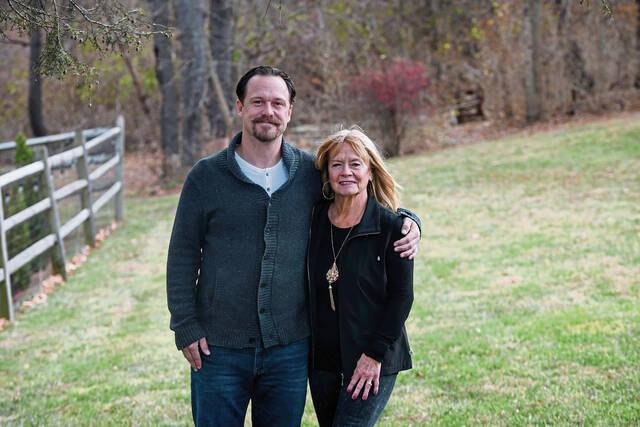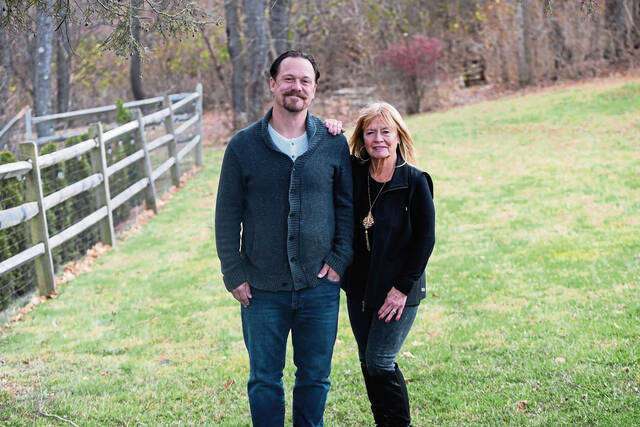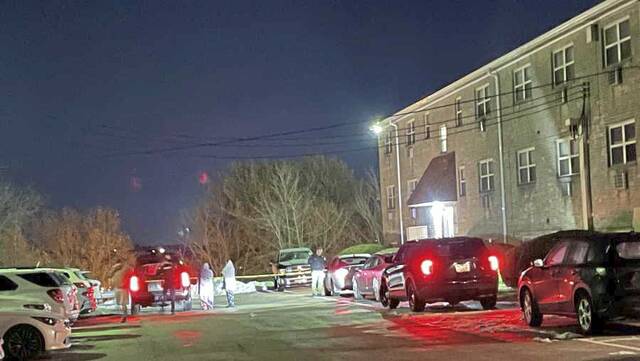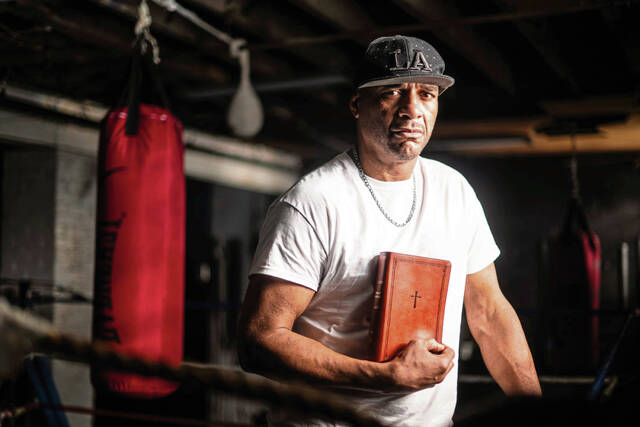When Chris Coles’ husband lost his job as a steelworker in the mid-1980s, she feared for her family. She feared for her ability to put food on the table and pay electric bills, and, most of all, she feared for her son Justin’s health.
“We lost our health insurance immediately, and my son was 4 years old,” said Coles of Ingram. “He had had some issues with his ears in the past, minor problems with ear infections, but as he started to get older, they started to increase, and they became really severe.”
As her son’s ear problems escalated and doctors recommended surgery, Coles was at a loss. Justin was one of over 300,000 children who were uninsured in the late 1980s in Pennsylvania. He and many other uninsured kids soon would be given the opportunity to access health care through a program that evolved into what we know today as the Child Health Insurance Program, or CHIP.
Pennsylvania’s CHIP program, which celebrates its 30th birthday today, would later be used as a model for the federal Child Health Insurance Program, signed into law Aug. 5, 1997, by President Bill Clinton. CHIP provides coverage to 9.6 million children nationwide, according to a 2018 statistical enrollment report.
“It’s just been a magnificent program, and it’s helped thousands and thousands of kids and parents to be able to get a good night’s sleep and know that their children will continue to be taken care of financially for their medical expenses,” Coles said.
A timeline of CHIP
CHIP began as a Highmark Blue Cross Blue Shield (formerly Blue Cross of Western Pennsylvania and Pennsylvania Blue Shield) initiative, originally known as the Caring Program for Children. The Western Pennsylvania Caring Foundation was funded through community contributions, which were matched by Highmark. It offered primary and preventive health care coverage to children in uninsured families who did not qualify for Medicaid.
The program invited donors to sponsor health care for children in need. At the beginning, many who benefited from the program were, like Justin Coles, children of steelworkers who had lost their jobs. In 1985, the cost to sponsor a child was $156 per year.
Charlie LaVallee, who directed the Caring Program, said the initiative grew out of listening to families in need.
“Parents were afraid to go to the ER, they were afraid to go to the doctor because they couldn’t pay,” Lavallee said. “I think, honestly, we need to really hear that part of the story from the parents, and realize that if we start again by listening, and we feel the pain of our neighbor, that’s going to help us act. I believe in all of my soul we should be proud in Western Pennsylvania that we listened and acted, and it got taken to another level through legislation and appropriating the funds. But it’s important to know that it didn’t start there.”
The Caring Program would become the model for CHIP. Government and private officials lent input, leadership and drive to the nascent program. Allen Kukovich, the former Westmoreland County legislator who spearheaded the Pennsylvania version of the program, described the circumstances of CHIP’s creation as a “fortunate confluence of events.”
A heightened focus on health care issues, combined with the existing model of the Caring Program and an opportunity to fund the program through a portion of the state’s cigarette tax, set the stage for CHIP in Pennsylvania.
“In August of 1991, I was working with the chair of the Appropriations Committee in the House, and we took two of those cents from the 13 cents (of the cigarette tax) and segregated it out for a children’s health fund project,” Kukovich said. “At that time, with tobacco consumption, one penny on a pack raised about $10 million a year. When we passed the budget in early August, we created a $20 million fund for a program that didn’t exist yet.”
With the funds for the program secured, CHIP was approved in 1992.
“My goal in Pennsylvania was incrementally to reach the point where every child has health care. Despite some setbacks at the federal level, we’re pretty close to that in Pennsylvania now,” Kukovich said. “I think it would be next to impossible to try and pass a program like that today.”
CHIP brought peace of mind to families in ways Kukovich hadn’t anticipated, he said.
“When I initially thought about this issue, it was all about medical care, but I also learned that many parents had what I called a fear factor,” he said. “They didn’t allow their children to participate in normal child activities like sports because they were afraid that if they got hurt, there was no way they could pay for taking care of it.”
Reaching out to families to make sure that they knew about the resources available to them proved essential. CHIP and the Western Pennsylvania Caring Foundation for Children used connections with local community partners as well as public service announcements through WQED, some of which featured Fred Rogers of “Mister Rogers’ Neighborhood” and Steelers football players, to spread the news.
“We ran into a problem of getting people enrolled, the ‘too good to be true’ syndrome. We’re talking about a lot of working parents who never had to rely on a program of any sort, and it was hard to believe that they could be qualified for up to 250% of the poverty rate,” Kukovich said. “A parent needed to hear it three times. If they saw something on TV, in writing, or heard from a family member or neighbor about it, that was what would convince them to inquire and enroll.”
A national initiative
U.S. Sen. Bob Casey Jr.’s father, former Gov. Robert Casey Sr., signed the state version of CHIP into law. Casey Jr., a Democrat from Scranton, praised the program for how it has helped families.
“Over 131,933 children enrolled (today in Pennsylvania) is just a remarkable testament to probably one of the earliest and most successful health care programs since the creation of Medicare and Medicaid,” Casey said.
In his time in the Senate, Casey said he has made ensuring funding for the federal version of CHIP a priority. Citing a Census Bureau statistic that 5% of U.S. children are still uninsured as of 2021, Casey said the program still has room to grow.
“If my father were sitting here, he would say, ‘Don’t spend too much time celebrating 30 years.’ He would say, ‘Keep going, and get that uninsured rate down to zero,’ ” Casey said. “We still have a ways to go in terms of covering more children. The fact that Pa. doesn’t have a provision yet to cover pregnant women is, I think, an area that should be a subject of more work.”
For Lavallee, the idea that a program that started at a local level could benefit families nationwide is a point of pride.
“Western Pennsylvania should be very proud that it created a model for the nation,” LaVallee said. “I think that’s a great legacy for the people of Western Pennsylvania.”
CHIP today
Sally Kozak, deputy secretary of the Pennsylvania Office of Medical Assistance Programs, explained that CHIP covers all children up to age 19, regardless of income.
“What changes is the tier that your child falls into,” Kozak said. “Free CHIP, in which parents pay nothing; low-cost CHIP, in which case parents pay part of the premium; and full-cost CHIP, in which parents pay the full-cost premium — which is still typically less expensive than the insurance that they would otherwise pay for — they all get the same level of coverage. It’s just a matter of how much you have to contribute towards the cost of it.”
Pennsylvania had about 200,000 kids enrolled in CHIP before the pandemic, as compared to today’s approximately 131,000, Kozak said.
“We had seen enrollment applications stay steady at about 6,000-8,000 a month. We continue to see the same number of applications, but because of the public health emergency and people having lost jobs and income, many of those kids are now eligible for Medicaid,” Kozak said.
During the covid public health emergency, children were prevented from losing eligibility for Medicaid, and as such, many have not had to re-enroll in CHIP. Kozak expects to see a rise in CHIP applications once the public health emergency officially ends.
“It is so important that our children get a good start, in order for them to grow up and be healthy, responsible, productive adults,” Kozak said. “A large part of that ability to grow and develop is to make sure you have access to basic preventative care. That’s what we provide. We believe it’s vital to their future.”













